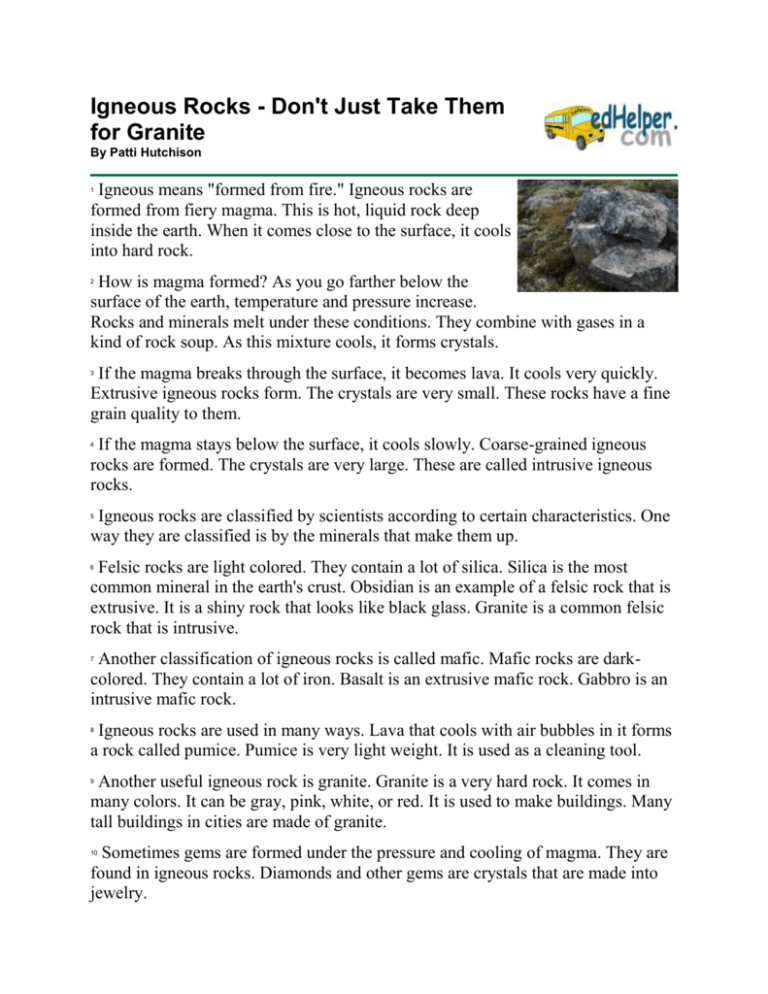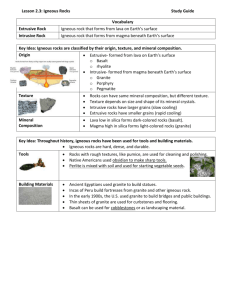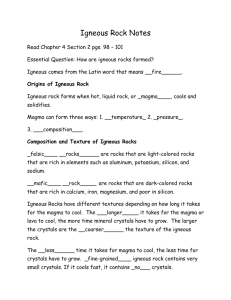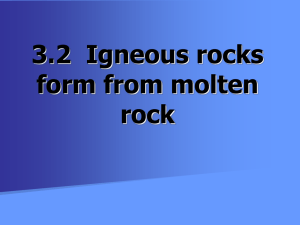Igneous Rocks - Don`t Just Take Them for Granite
advertisement

Igneous Rocks - Don't Just Take Them for Granite By Patti Hutchison Igneous means "formed from fire." Igneous rocks are formed from fiery magma. This is hot, liquid rock deep inside the earth. When it comes close to the surface, it cools into hard rock. 1 How is magma formed? As you go farther below the surface of the earth, temperature and pressure increase. Rocks and minerals melt under these conditions. They combine with gases in a kind of rock soup. As this mixture cools, it forms crystals. 2 If the magma breaks through the surface, it becomes lava. It cools very quickly. Extrusive igneous rocks form. The crystals are very small. These rocks have a fine grain quality to them. 3 If the magma stays below the surface, it cools slowly. Coarse-grained igneous rocks are formed. The crystals are very large. These are called intrusive igneous rocks. 4 Igneous rocks are classified by scientists according to certain characteristics. One way they are classified is by the minerals that make them up. 5 Felsic rocks are light colored. They contain a lot of silica. Silica is the most common mineral in the earth's crust. Obsidian is an example of a felsic rock that is extrusive. It is a shiny rock that looks like black glass. Granite is a common felsic rock that is intrusive. 6 Another classification of igneous rocks is called mafic. Mafic rocks are darkcolored. They contain a lot of iron. Basalt is an extrusive mafic rock. Gabbro is an intrusive mafic rock. 7 Igneous rocks are used in many ways. Lava that cools with air bubbles in it forms a rock called pumice. Pumice is very light weight. It is used as a cleaning tool. 8 Another useful igneous rock is granite. Granite is a very hard rock. It comes in many colors. It can be gray, pink, white, or red. It is used to make buildings. Many tall buildings in cities are made of granite. 9 Sometimes gems are formed under the pressure and cooling of magma. They are found in igneous rocks. Diamonds and other gems are crystals that are made into jewelry. 10 Igneous rocks are formed in a continuous cycle. Rocks and minerals melt deep beneath the earth. They form magma. Magma bubbles up closer to the earth's surface. It cools and forms igneous rocks, which we can use in many ways. 11 Copyright © 2013 edHelper








